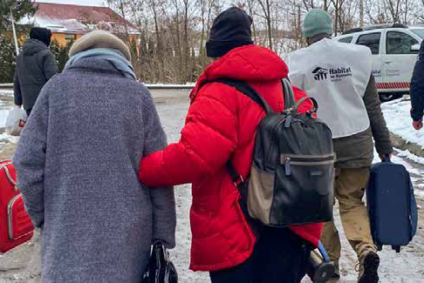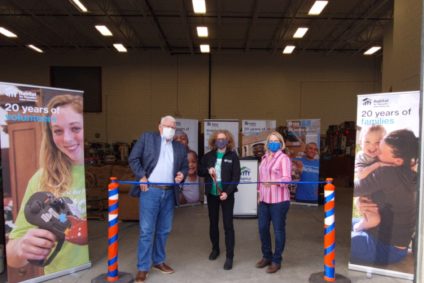Affordable Housing Policy for 2019 and Beyond

In December of 1948, the United Nations recognized housing as a fundamental human right, and their Universal Declaration of Human Rights, Article 25 (1), has stated the following:
“Everyone has the right to a standard of living adequate for the health and well-being of himself and of his family, including food, clothing, housing and medical care and necessary social services, and the right to security in the event of unemployment, sickness, disability, widowhood, old age or other lack of livelihood in circumstances beyond his control.”
Canada has ratified the UN’s Universal Declaration of Human Rights, meaning Canada is committed to implementing all the articles included in the declaration.
Affordable housing goes far beyond just having a roof over your head. The Federation of Canadian Municipalities (FCM) points out safe, affordable housing is needed to ensure our communities are able to attract newcomers, who will enrich the area and drive economic growth. In 2017, the federal government, on the recommendation of FCM, announced the National Housing Strategy. The strategy focuses on the basics, such as new affordable housing construction and repairs.
According to the Poverty Institute of Canada, 4.9 million Canadians live in poverty, including 1.34 million children. Some groups are more vulnerable to poverty than others. Canada’s Indigenous population has 25% of its people living in poverty, with 40% of Canada’s Indigenous children living in poverty. Among Canadians with disabilities, 15% live in poverty, with 59% of that group being women. Single mothers are significantly poorer than 2 parent families, and the poverty rate in racialized communities is 22%.
The Canadian Mental Health Association’s Citizens for Health project concluded housing was a critical factor in the mental health of every community. All levels of government must work together to ensure access to safe, affordable, and appropriate housing as individual circumstances dictate.
National Housing Strategy
Affordable housing goes far beyond just having a roof over your head. The Federation of Canadian Municipalities (FCM) points out safe and affordable housing is needed to ensure our communities are able to attract newcomers, who will enrich the area and drive economic growth. The National Housing Strategy ensures basic human rights to Canadians as laid out by Article 25 (1), focusing on two major steps. The first being replacing expiring social housing rent subsidies, and the second is to invest in repairs of social housing units to keep people in their homes.
The Ontario Non-profit Housing Association (ONHA) released a report on the cost and benefits of investment to tackle housing issues in Ontario. The Affordable Housing Plan for Ontario highlights four recommendations. Ontario needs to 1) build 69,000 affordable homes in the next 10 years 2) deliver income support to 311,000 households 3) extend the life of 260,000 community owned rental homes 4) create 30,000 supportive housing units in the next 10 years for Canadians with mental health and addiction challenges, and end the homelessness problem.
The report also shows 90,000 Ontarians experience homelessness in a year. If Ontario wishes to keep up with population growth and eliminate the waitlist for affordable housing, over 16,600 homes will need to be built each year for the next 10 years.
This investment over the next decade comes with significant annual benefits. Canada will save up to $1.1 billion on Health and Justice systems, construction will generate $2.6 billion, while seeing an increase in consumer spending by $1.1 billion. With billions of dollars in savings to taxpayers and putting more money in the pockets of hard-working Canadians, would it make sense to make ONHA’s recommendations policy?
Affordable Housing Initiatives by Two Non-profit Organizations:
Raising the Roof provides families with an affordable home, being one of the first steps to end homelessness. An affordable home brings much-needed stability to a family, and Raising the Roof has a “meet you where you’re at” approach to help those that are homeless or at imminent risk of facing homelessness.
The Housing First model has proven to be effective. Once individuals have been housed, social services support families from the perspective of employment, addictions, mental health, education, and establishing community connections.
Habitat for Humanity’s Deferred Homeownership Model, according to John Gerrard, CEO Habitat for Humanity Halton-Mississauga-Dufferin, is a game-changer. Under this model, property ownership is delayed 20 years. After 20 years, the family is given the opportunity to take ownership of the home and apply all their accumulated rent towards the house. For more information on the Deferred Homeownership Model, check out Habitat for Humanity’s website.
The affordable housing crisis affects every community in Canada from coast-to-coast, and the Ontario Non-profit Housing Association has put together a plan that takes a holistic approach to solve the problem. With the Federal Government’s National Housing Strategy, the work of the FCM, the ONHA’s policy recommendations, and the work of nonprofits such as Raising the Roof and Habitat for Humanity, the affordable housing crisis CAN be fixed. It’s up to all levels of government to make it happen.
By: David Wright
Updated: July 5, 2021


